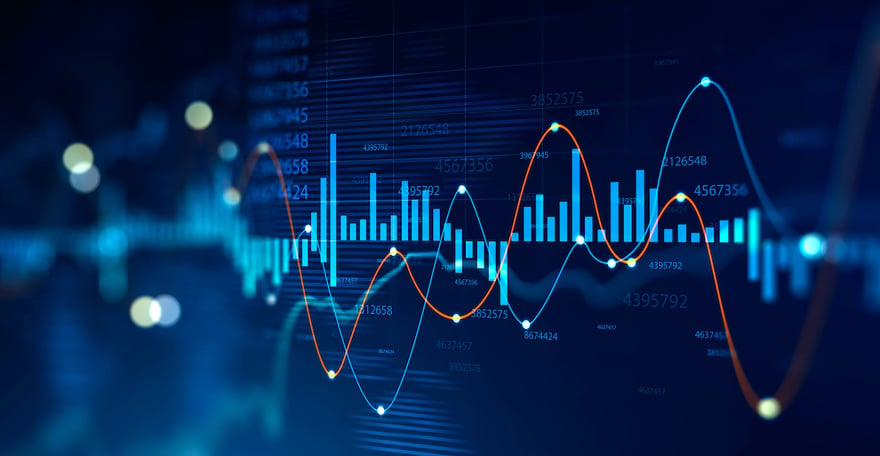Serving the expansive and diverse audiences at entertainment venues of any size requires a multifaceted approach to venue management. From security to event staff, owners and managers must wear numerous hats to ensure operations run smoothly and safely for everyone in the building.
To help these organizations streamline processes and optimize venue operations, we recently conducted a live webinar on the topic that featured Dave Felsen, special project manager at the Kansas City Chiefs; Jeff Gillies, director of industrial control systems at Hollywood Park Management Company; and Rob Majoy, police lieutenant at Cedar Fair parks.
Backed by this expert group of panelists and 24/7 leaders Matt Dobrosevic and Mike Karp, the webinar covered how analytics is transforming venue operations and facility management. Some of the world's most prestigious venues are currently utilizing the 24/7 Software system—now in conjunction with our new analysis platform—to transform the way that they work to create efficiency.
24/7 Software’s goal is to help you improve the guest experience by running your venues as optimally as you possibly can. With granular, detailed analytics, we can get you there, and below we discuss how with input from today’s guest speakers.
Creating a System of Resolution
By gathering and analyzing certain data, we can better understand the efforts that venues like yours are currently making. Then we can help them come up with innovative new ways to work in guest experience, security, maintenance, and facility operation to positively impact the guests visiting your venues.
Venues utilize the 24/7 platform as a centralized database for the processes and actions of their teams, so reliable system integrations are essential for standardizing operations—including integrations with third-party software. This need led to the development of an established analytics solution to further functionality and aggregate the highest quality data. Invaluable third party data integration (as opposed to venue-specific data) creates a system of resolution. This solution combines the software that’s collecting and aggregating the data with the analytics platform that resolves and closes out processes.
Finding the Data to Improve Venue Operations
Your first step when starting with analytics is understanding what data is available and how you can use it. With this, we aim to answer the following overarching question:
How do you identify which data can help you improve operations?
Once we determine data availability, then we can tackle how to use that data to make an effective action plan. This is where differentiating “clean” data from “dirty” data becomes incredibly important. Collecting data isn’t necessarily difficult, but finding accurate, hygienic data can be challenging. As Jeff Gillies explains, “There’s data everywhere ... You’ve got to figure out how to pull it out right.”
According to Gillies, many managers have a “gut feeling” regarding how entries will flow, or how they’re getting people from one area to another. Traditionally, leadership teams didn’t have truthful information or proof to back up any of those feelings (or disprove them, if necessary). Gillies suggests starting with attempting to prove these gut feelings with data, as that will lead you to find “so much more that you didn’t even think about” in terms of improving operations.
Data Possibility: Breaking Down Silos
Aligning teams and optimizing communication becomes a lot easier when everyone has streamlined access to the same clean data in a centralized location. The software’s interoperable system harmonizes various venue operations, breaking down silos between teams to standardize procedures across the board.
Rob Majoy, for example, is responsible for the communications division and manages the 24/7 Software platform for Cedar Park’s 13 locations across the country. Before analyzing performance data for the end user, consistency across the 13 parks was lacking in many areas from facility maintenance to security patrols. The analytics platform gave Rob an integrated tool for entering information and creating incidents. This functionality allowed for the micromanagement of data points according to specific task buckets. (Or “quadrants” of the venue, as Dave Felsen refers to them.)
Data Operability: The Power of Visualization
Dave Felsen goes on to explain that, it was especially difficult for his team members to fully understand their performance when they looked at raw data about response times in crowded spreadsheets. But when they put that data into an organized system and leveraged analytics to make a bar chart or graph (or anything that they would be able to look at and compare), the response time data showed that times were excellent—people simply weren't putting data into the system quickly enough. Once teams were able to visualize these data shifts, they were more inclined to enter data as soon as they completed tasks.
Advanced data analytics also provides real-time updates in easy-to-use dashboards with event data from a timeframe perspective. This way, managers can evaluate venue needs as they arise and course correct as necessary before, during, and after an event. To keep facilities running smoothly, redeployment is key in terms of maximizing the staffing on hand versus where incidents are happening. You can use system integrations to gather as much information as possible for your response and action plans.
Proving ROI Through Aligned Processes
The acquired data’s affordability is demonstrated via increased automation, preventative cost savings (rescued revenue), and platform adoption. For example, venues can use their dashboards to prove performance and ROI to stakeholders by showing labor hours or how much product is being used.
Jeff Gillies refers to these metrics as “chargeback” data, because these figures can be used to charge back to either the events or the vendors based on what work was done. Gillies uses the equipment engineers he employs as an example, as their responsibility is to prove how much work they’re doing. From a labor hours perspective, the dedicated dashboard can clearly illustrate work orders to show exactly how much work is being done by the engineers. It’s tough to argue with hard metrics.
The webinar wraps up with a live walk-through demonstration of 24/7 Software by Mike Karp. He demonstrates how the dashboards built within the system clearly show the operational effectiveness and productivity of employees and departments. He details the dashboard customizations, mathematical functions, and performance highlights that help to achieve this, and plays around with various views to emphasize specific capabilities within the platform. For a one-on-one session with one of our product specialists, feel free to request a demo to learn more about the uses of 24/7 Software for your company.
These capabilities have become a real game changer (pun intended) for entertainment venues in various spaces. 24/7 Software offers an analytics solution that has historical data baked in with tools for aggregated data, personalized real-time dashboards, and more. This additional feature works to reveal inefficiencies and mitigate risks, transforming the way venues operate both now and in the future.




